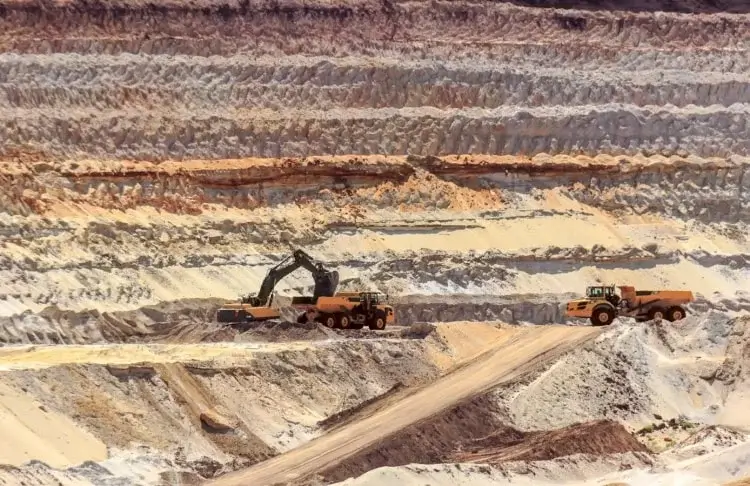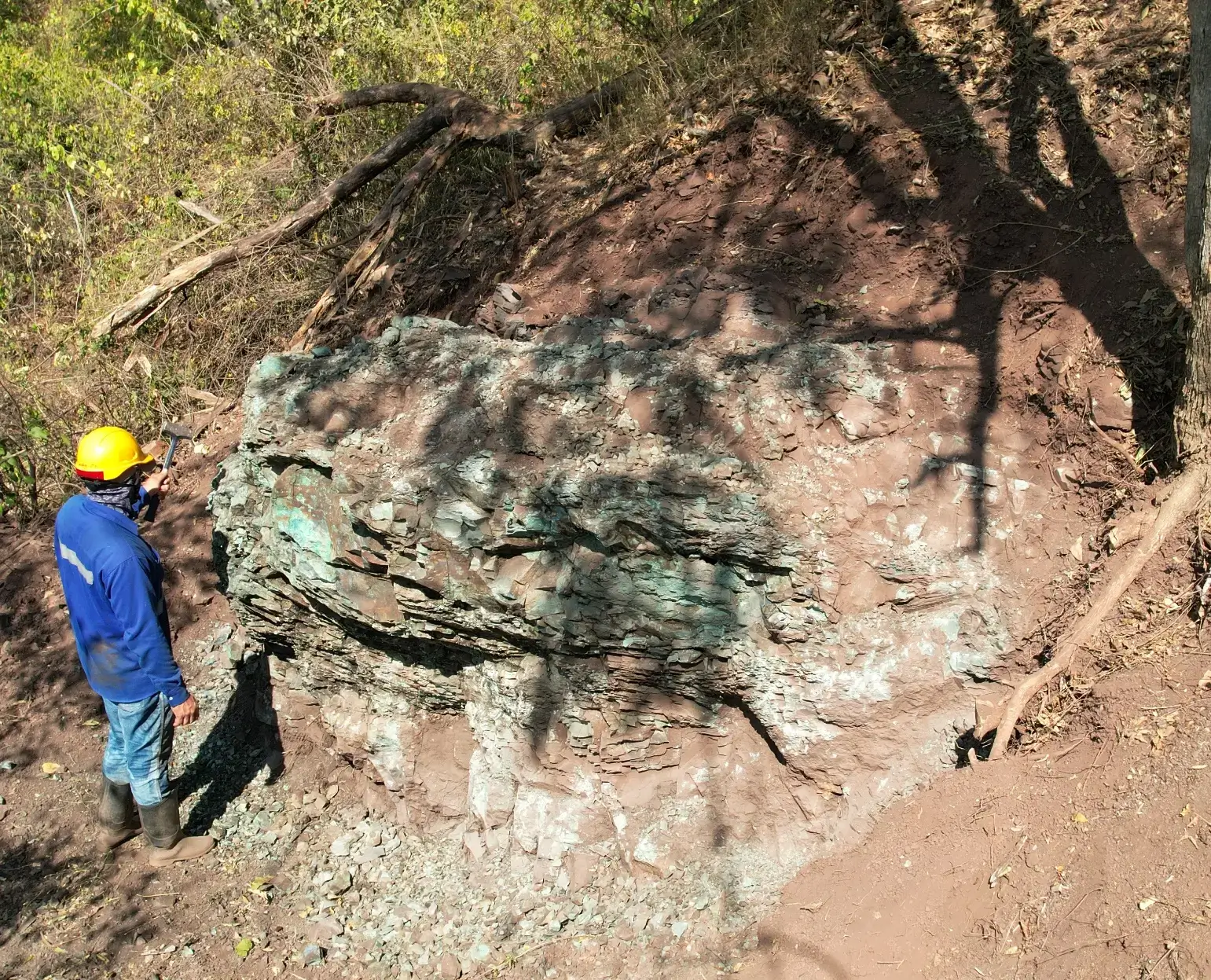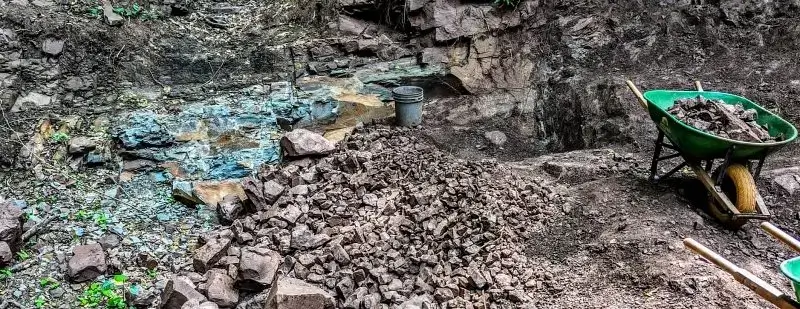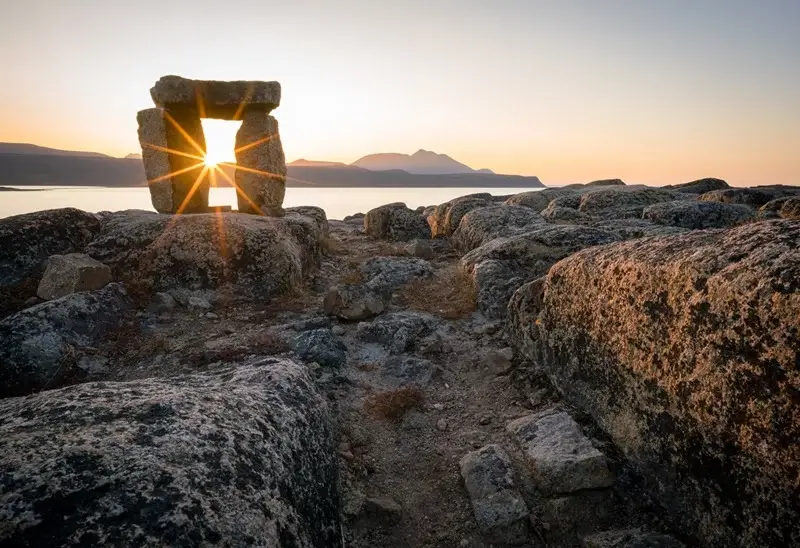Following the high-grade discovery on the Storm Copper Project on Somerset Island, Nunavut, last year, American West Metals (ASX: AW1; OTCQB: AWMLF; FRA: R84) will be drilling about five times as much in the now starting drilling season as in the previous year!
For the planned 10,000 m of drilling, two different drilling rigs will be used, a reverse-circulation (RC) drill and, a bit later, a diamond drill. The two drills have different tasks: The RC drill is planned for about 8,000 meters of near-surface drilling, reaching a maximum depth of 150 meters, which corresponds to about 50 drill holes. With this, the company aims to determine a near-surface resource with high-grade copper in Zone 4100N and the neighboring Zones 2750N and 2200N in the shortest possible time, which may be suitable for cost-effective open-pit mining via direct shipping. The RC rig is favored for the speed of drilling. Historical drilling in Zone 4100N has intersected large amounts of high-grade copper near the surface, including: 15m @ 3.88% Cu from 72.4m (ST99-47); 27.2m @ 1.9% Cu from 78.8m (ST00-62) and 5.8m @ 3.6% Cu from 38.6m (ST99-53). The footprint of the near-surface, high-grade copper mineralization at Storm has been defined over an area of 40 hectares, with an average thickness of mineralization of 24 m @ 2.15% Cu (weighted average grade from 32 drill holes). To date, four main zones of mineralization have been identified.
This will be followed by about 2,000 m of diamond core drilling. These drill holes will be advanced to greater depths to further pursue the major discovery of stratiform sedimentary copper sulfides at depth. American West sees the potential for a large sedimentary copper system on the project area at Storm. To support the drilling, the company will conduct ground gravity surveys and surface electromagnetic surveys.
Dave O’Neill, Managing Director of American West Metals, commented: “Exploration and drilling activities are expected to begin in early April. The first phase of drilling is designed to define the initial JORC resources in the 4100N, 2750N, and 2200N zones. We believe significant copper resources are present here that show excellent potential for a low-cost open-pit operation. Exploration will also pursue the groundbreaking discovery of stratiform, sedimentary copper mineralization below the known copper occurrences. The 2022 drilling suggested that we may have encountered the edge of a large sedimentary copper system, and we will use ground gravity and EM to define the core of the mineralization. Further diamond drilling with the rigs currently on site will be used to test these deeper targets.”
Large Sedimentary Copper System Suspected at Depth
The recent discovery in drill hole ST22-10 (see ASX announcement dated September 28, 2022: New copper system confirmed at the Storm Project, Canada) suggests that the known near-surface copper occurrences at Storm may be related to a large, sedimentary copper system at depth.
The interpretation of geochemical and geological data from drill hole ST22-10 suggests that the hole intersected the margins of a mineralized system. This interpretation is supported by a series of large, coincident electromagnetic (EM), induced polarization (IP), and gravity anomalies. The near-surface copper occurrences at Storm are located above or in close proximity to the large geophysical anomalies, further highlighting the potential connection between the two types of mineralization.
To calibrate new high-resolution geophysical surveys, close-spaced ground gravity surveys and EM surveys are planned on known occurrences. Based on these survey results, the company then plans to expand its exploration regionally. New areas include the Blizzard, Tornado, and Tempest prospects (see Figure 2). The Tempest prospect is located about 40 kilometers south of the Storm deposit and contains a large (>250 m long) oxidized copper mineralization exposed at surface that yielded up to 32% Cu. Its location and distance from Storm illustrate the extent of the prospective copper horizon in the project area.
Conclusion: The Storm project possesses all the characteristics that could make it a true company maker for American West: high-grade deposits and regional potential. So far, the company has literally only discovered the tip of the iceberg on Somerset Island in the Arctic archipelago off the west coast of Greenland. The high-grade, near-surface copper mineralization at 4100N and neighboring targets could enable the rapid development of a potentially open-pit resource. Geologists have strong arguments to support the assumption that the high-grade discoveries are part of a much larger regional structure with sedimentary copper deposits underlying it. The extent of this system can be imagined when connecting the Storm discoveries with the Tempest target 40 kilometers to the south (32% copper at the surface). Despite Somerset Island being remote, it is extremely conveniently located due to its direct access to the sea. After this season, we will have a much clearer picture of the potential: If geologists can confirm the hypothesis of a regional sedimentary copper system, Storm will certainly become interesting for major mining companies. However, American West might not even need to rely on their interest, as the special opportunity with the Storm project lies in the fact that the high-grade deposits could offer a quick, cost-effective path to initial cash flow that would be manageable even for a small company.







